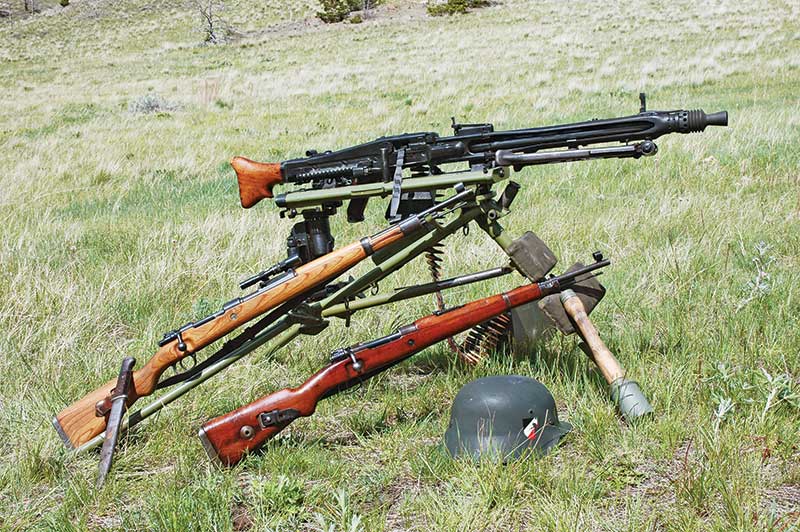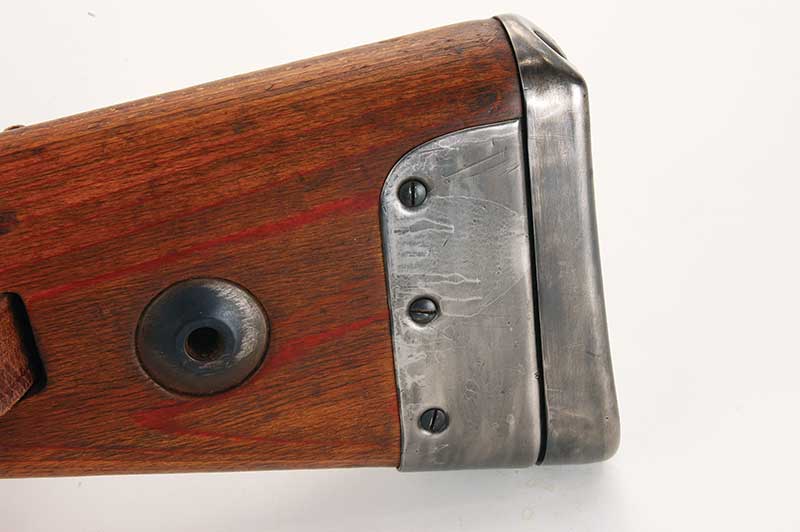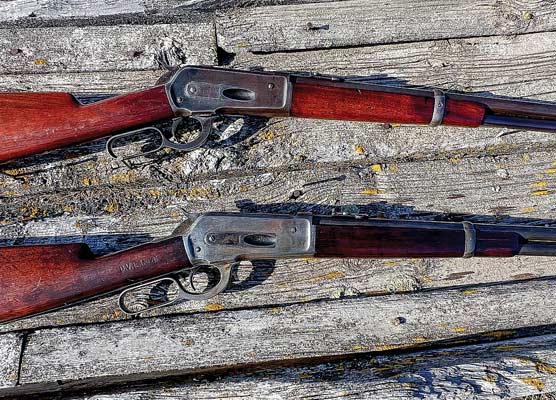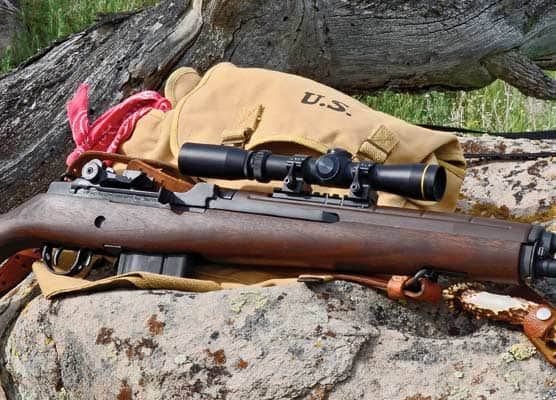Mountain Mauser
The G33/40 Became The Darling Of
Custom Riflemakers And Is Now A
Highly Desirable WWII Collectible
One military Mauser has been torn apart and the action used for high dollar custom sporting rifles more than any other. At least in my considered opinion. It is the G33/40 as issued by the German Wehrmacht to its Gebirgstruppen or mountain troops.
The reasons it is the gem of many custom gun builders’ eyes are two factors. Probably the most important is the production quality is superb—likely the best of any bolt action military rifle ever made. Second, because it was intended for troops hauling themselves up mountains, it was made with lightening cuts in its receiver and even a hollow bolt handle.
When Germany absorbed Czechoslovakia into the Third Reich, one of its major aims was getting control of the huge armaments industrial complex at BRNO. Several years before World War II the Czechs had already developed an 8mm carbine based on Peter Paul Mauser’s Model 1898 action. It was named the VZ33. With minor changes the Germans evolved it into the G33/40. Magazine capacity, safety and sight arrangement remained the same as their current K98k infantry rifle, which had to help with basic rifle training.
Here’s a conundrum I must mention. The “K” in K98k stands for karabiner which translates into English as “short rifle.” However, the “G” in G33/40 stands for gewehr and translates into “rifle.” Truth is, size-wise the two are not radically different although barrel length for the K98k is about 4 inches longer than the G33/40’s 19.29 inches. Their weights are close at 8.6 pounds for the K98k and 7.9 pounds for the G33/40. One factor bringing up the G33/40’s weight is immediately evident. That is a 1.25-inch-wide sheet steel cover on the stock’s left rear side just in front of its steel buttplate.
In Military Mausers Of The World 3rd Edition, author Robert W.D. Ball states the steel plate is meant to protect the wooden stock from damage when the G33/40 was used as a walking aid on steep and slick slopes. Speaking of stock wood, first-built G33/40’s used stocks of solid European walnut, but early in production stock material was changed to laminated wood. The Germans even experimented with jointed stocks as the Finns used on some of their remodeled Mosin-Nagants. It was supposed to help with wood shifting due to extreme temperature changes. Samples of those stocks are rare. (I actually got one once on a G33/40 but it had been “Bubba-ed” to such an extreme it was not salvageable.)
As with just about any piece of military equipment used by the German Wehrmacht in WWII, G33/40’s have many stampings. Some of these are acceptance stamps after inspection and others are codes. For instance, early G33/40’s are stamped “945” on top of the front receiver rings. Into production a bit, the code was changed to “dot.” Both stood for location of manufacture at BRNO. By the way Germany changed “BRNO” name to “Brunn” in their language.
It should be noted the two types of stock are interchangeable, so battlefield use could have resulted in an early rifle having a later stock and vice-versa. Another stamping I’ve seen on all of the G33/40’s I personally handled (about six) is a 7.88 on the rear of their barrels just in front of the receiver ring. This is a measurement of the bore diameter in millimeters. Interestingly, early K98k’s were likewise marked, but in my small collection alone I’ve found them from 7.90 to 7.91.
Upon setting out to do a book now in print and available from Amazon—Shooting World War II Small Arms—I did not own a G33/40. My thought was, “No big deal. I have to buy a lot of guns for this project so that will be one more.” As with many of my goals, fulfillment wasn’t so easy. While not plentiful, G33/40’s are around, but just in the last week I’ve seen ones on the Internet sell for upwards of $3K. Only about 250,000 were made and many have been torn apart, so those remaining in original condition are becoming quite valuable.
To my good fortune a friend loaned me his 945-coded one for an entire winter. And a fine example it is too; hardly showing any use. Sadly, I had to give it back to him, but along the way picked up a parts one for myself. “Parts” means serial number of bolt, action and stock do not match. Then as has happened often in my life, someone did me a good deed. Another friend found an all-matching one for me. It carries the dot stamp and date of 1941 but had obviously been carried outdoors and in all sorts of weather. Likely it was issued to a well-trained Gebirgstruppen because its bore remains perfect.
G33/40’s were chambered in 8mm Mauser (7.9x57mm or 7.92x57mm in Europe). Germany fielded many different loadings for this round during WWII, but the one I’ve found mentioned most often was a 198-grain FMJ bullet at about 2,500 fps. This load gives plenty of recoil in the K98k and, as might be expected, even more so in the G33/40. It’s the only complaint about them I’ve ever read.







